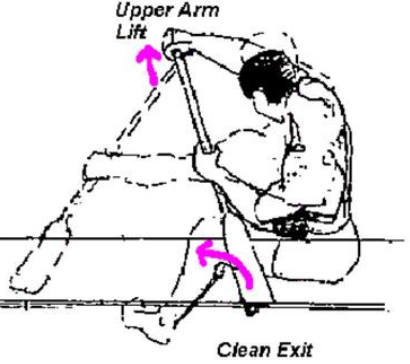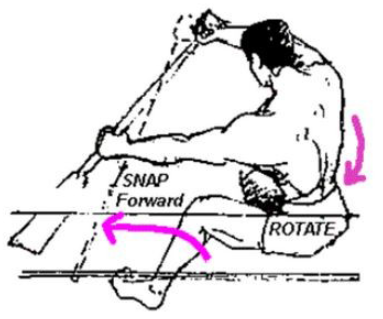1. Reach
This position in the stroke is crucial in maximising the length of the stroke. The outside arm is fully extended and the outside shoulder should be dropped slightly and also extended forward. The reach determines the length of a stroke and a long stroke means more water is pulled. The reach position determines the rotation of the torso. If the torso is “rotated” forward upon the paddle entering the water, the torso will naturally “de-rotate” back to the normal upright seated position.
3. PullOnce the paddle is fully submerged, the next part of the stroke is the Pull phase. The paddles should pull back directly parallel with the boat. The top hand stabilizes the paddle as the bottom arm and back muscles pull back. To use the back muscles effectively, the paddler sits up while pulling and continues to drive the paddle downward with the top hand.
|
4. ExitAt the end of the stroke, the paddle should exit the water at the hip. Allowing the stroke to go past the hip results in the paddling blade being at an angle that would slow down the boat. The outside arm bends slightly to allow the paddler to clear the water and then it is snapped forward.
|






